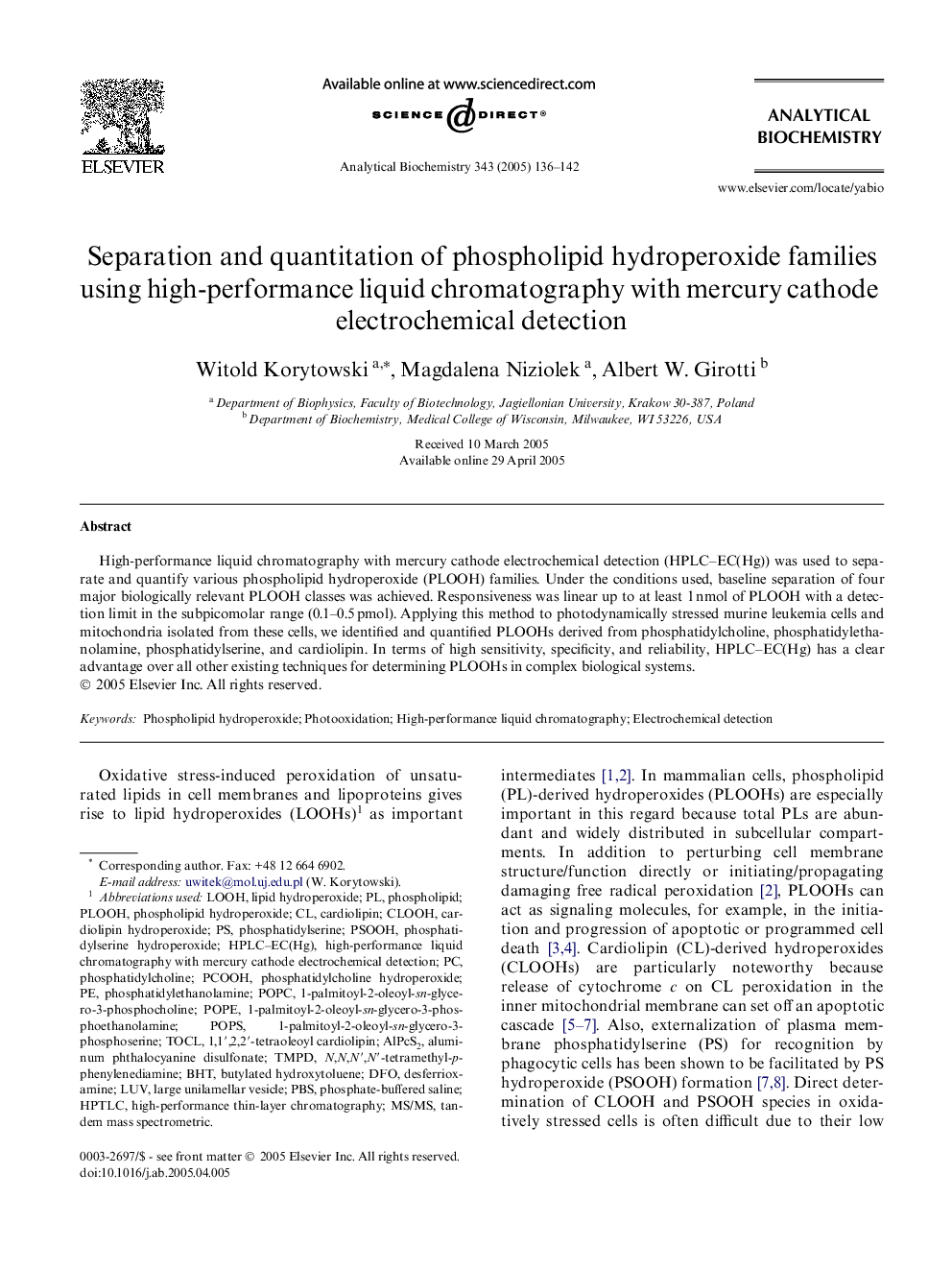| Article ID | Journal | Published Year | Pages | File Type |
|---|---|---|---|---|
| 10533768 | Analytical Biochemistry | 2005 | 7 Pages |
Abstract
High-performance liquid chromatography with mercury cathode electrochemical detection (HPLC-EC(Hg)) was used to separate and quantify various phospholipid hydroperoxide (PLOOH) families. Under the conditions used, baseline separation of four major biologically relevant PLOOH classes was achieved. Responsiveness was linear up to at least 1Â nmol of PLOOH with a detection limit in the subpicomolar range (0.1-0.5Â pmol). Applying this method to photodynamically stressed murine leukemia cells and mitochondria isolated from these cells, we identified and quantified PLOOHs derived from phosphatidylcholine, phosphatidylethanolamine, phosphatidylserine, and cardiolipin. In terms of high sensitivity, specificity, and reliability, HPLC-EC(Hg) has a clear advantage over all other existing techniques for determining PLOOHs in complex biological systems.
Keywords
Related Topics
Physical Sciences and Engineering
Chemistry
Analytical Chemistry
Authors
Witold Korytowski, Magdalena Niziolek, Albert W. Girotti,
